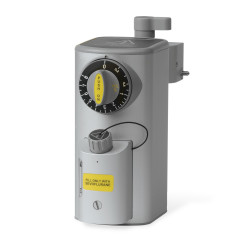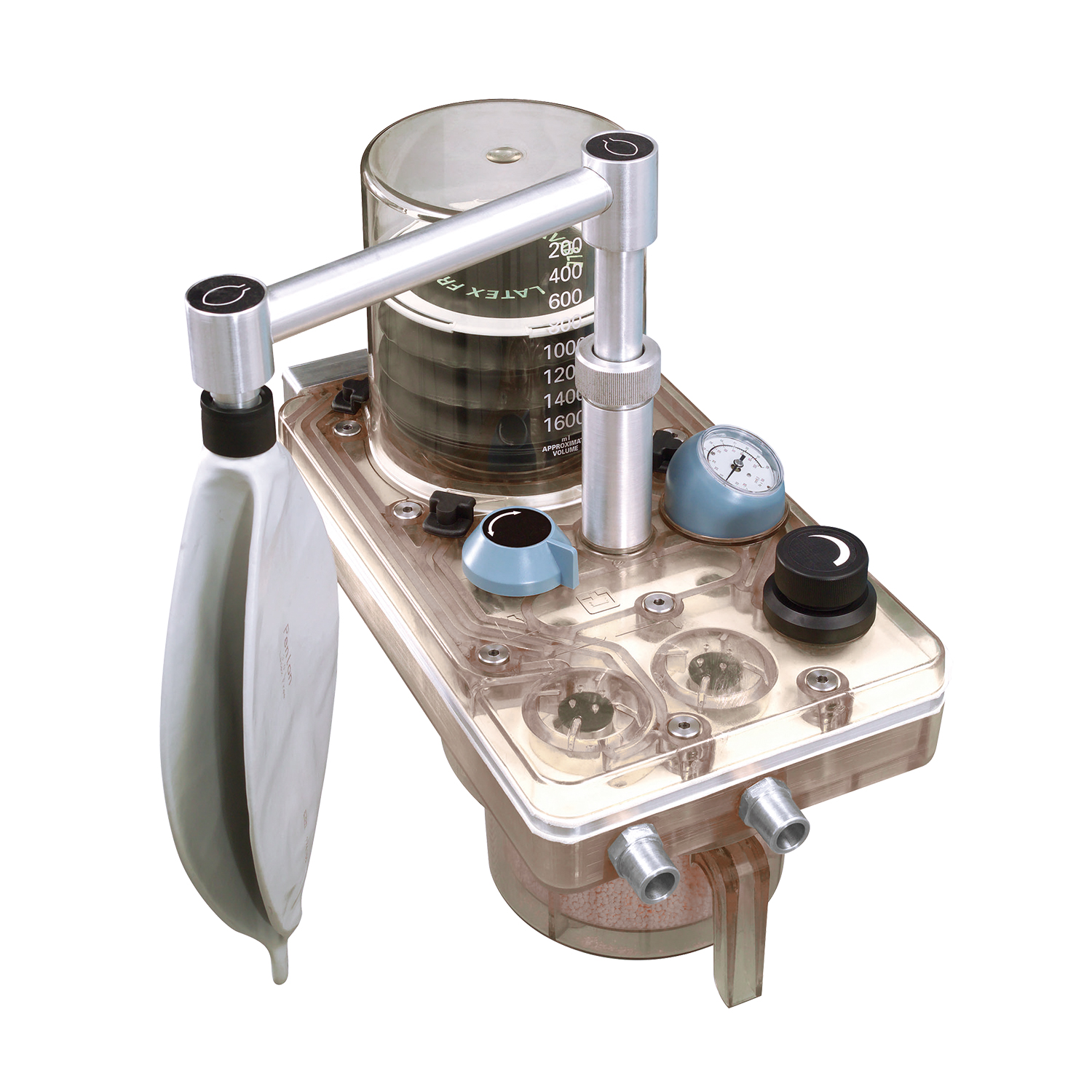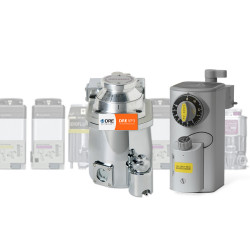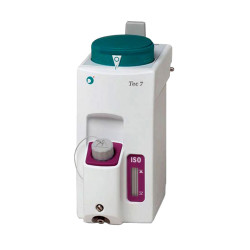Med Vest Technology AV-S Touchscreen Anesthesia Ventilator
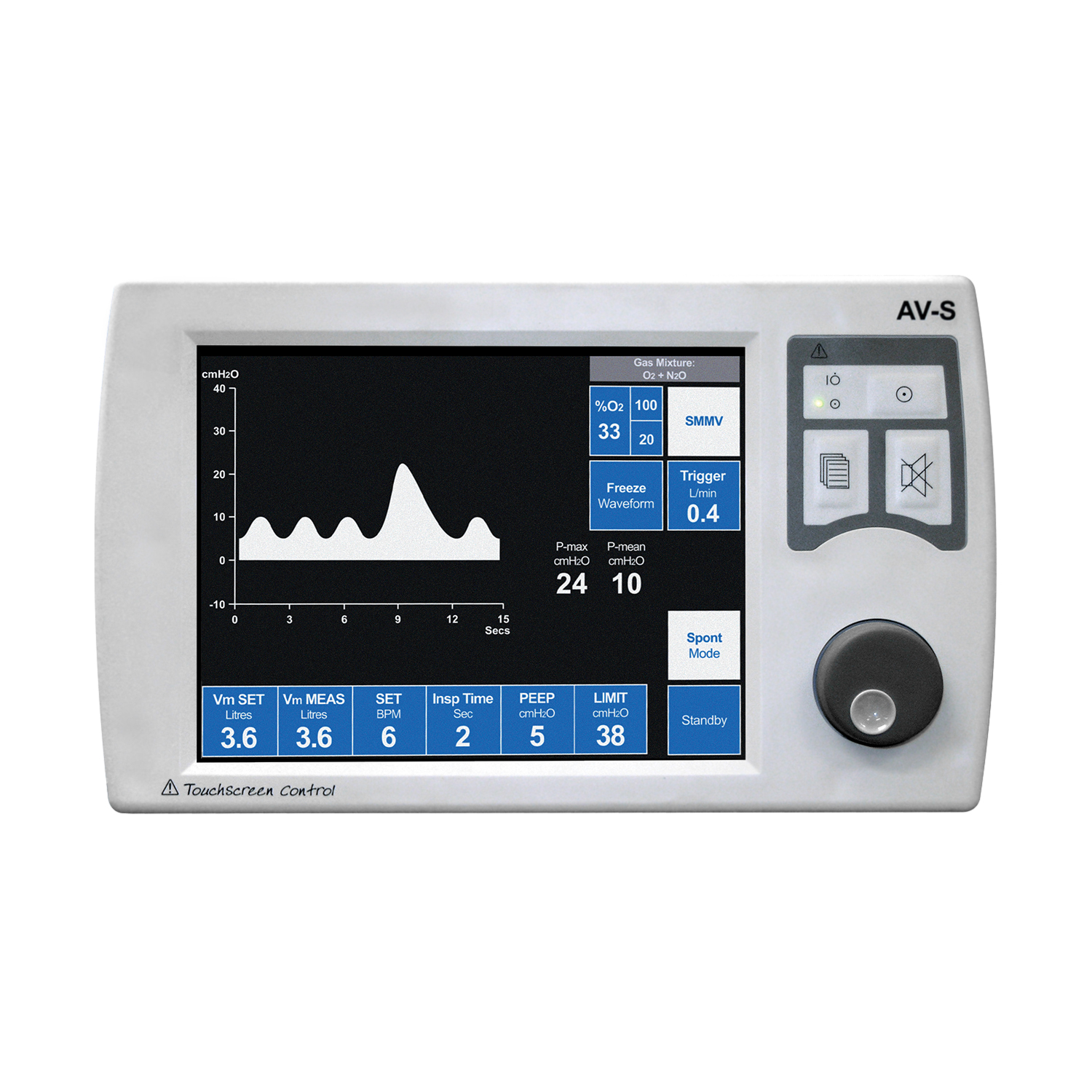
Med Vest Technology AV-S Touchscreen Anesthesia Ventilator
0 item is in your cart. View cart now
All product and company names are trademarks of their respective holders. Use of them does not imply any affiliation with or endorsement or sponsorship by them.
Details
The AV-S Features Three Advanced Spontaneous Breathing Modes
The Med Vest Technology AV-S Touchscreen Anesthesia Ventilator provides three support modes that can be utilized as the patient attempts to breathe spontaneously. Patient recovery is accelerated by increased tidal volume and SpO2 and reduced EtCO2.
The Med Vest Technology AV-S Ventilatoris designed to work with the DRE Integra AV-S Anesthesia System. The intuitive user interface and comprehensive support modes provide optimum therapy for all patient profiles.
Breathing Modes
IMV (Synchronized Intermittent Mandatory Ventilation)
Provides a minimum level of volume, and allows spontaneous breaths and set mandatory breaths.
- SIMV - Spontaneously Breathing Patient: Negative pressure (Negative relative to PEEP) in the Trigger Window (Trigger Window = 60% of Cycle Time), generated by the patient's spontaneous breath, results in a synchronized mandatory breath at a preset volume and rate.
- SIMV - Non-breathing Patient: If the patient makes no effort to breathe during a cycle, a mandatory breath, at the end of the Trigger Window, will still be delivered at the preset volume and rate.
SMMV (Synchronized Mandatory Minute Ventilation)
Provides a set level of minute volume ventilation and allows spontaneous breaths combined with a synchronized mandatory breath, to achieve the set minute volume.
- SMMV - Spontaneously Breathing Patient: Negative pressure in the Trigger Window (generated by the patient's spontaneous breath) results in a synchronized mandatory breath, ensuring that the set minute volume is achieved.
- SMMV - Non-breathing Patient: If the patient makes no effort to breathe during a cycle, a mandatory breath, at the end of the Trigger Window, will still be delivered at the preset volume and rate.
PSV (Pressure Supported Ventilation)
PSV assists each spontaneous breath and a preset pressure, reducing the effort required to breathe Negative pressure (generated by the patient's spontaneous breath) results in synchronized pressure support.
- PSV is used to support spontaneously breathing patients only. If the patient makes no attempt to breathe, the ventilator will not provide support and apnoea alarm will be activated.
Features
- Combines sophistication and ease of use.
- Large color touchscreen and com-wheel control.
- Volume, pressure, pressure support ventilation.
- Single/dual waveform display.
- Electronic PEEP and spirometry.
- Spontaneous monitoring mode.
- High quality, multi-option product.
- Built in oxygen, volume, and airway pressure monitoring.
- Fresh gas flow compensation in volume mode.
Specifications
Physical
- Size (Control Unit Only): 7.3 (H) × 11.4 (W) × 11.8 (D) inches (185 × 290 × 300 mm)
- Size With Adult Bellows: 15.2 (H) × 11.4 (W) × 11.8 (D) inches (385 × 290 × 300 mm)
- Weightof Control Unit: 16.8 lbs (7.6 kg)
- Weight with Adult Bellows: 19.8 lbs (9.0 kg)
- Screen Size: 8.4 inches (210 mm) TFT
- Bellows (Latex Free): 20 to 1600 ml, pediatric option 20 to 350 ml
- Power: 90 to 264 VAC, 47 to 63 Hz
- Drive Gas: Oxygen or Air
- Ventilation Modes: Off, Standby, Volume, Pressure Controlled, Spontaneous, PSV (for use in anesthesia procedures only).
Functional
- Tidal Volume: 20 to 1600 ml
- Rate (8PM): 4 to 100 bpm
- I:E Ratio: 1:0:3 to 1:8
- Pressure Limit: 5 to 80 cmH2O
- Fresh Gas Compensation: Automatic tidal volume adjustment; delivers precise volume
- Ventilation Modes: Off, standby, volume, pressure controlled, spontaneous, PSV (for use in anesthesia procedures only)
- Sigh Function (Volume Mode): Tidal volume (Vt) x 1.5 is delivered once, twice, three or four times every 50 breaths (frequency is user selectable)
- True Sigh: Does not affect I:E ratio
- Pressure Control: 10 to 50 cmH2O
- Spontaneous Mode: Active volume and pressure alarms, patient support function - automatic switch to volume cycle mode is apnea alarm is triggered
- Electronic PEEP: 4 to 30 cmH2O
- Oxygen Monitor: Fuel cell type
Alarms - Automatic
- Alarm Mute: 30 seconds
- Low Drive Gas Pressure: Less than 235 kPa (34 psi)
- High Continuous Airway Pressure: Above 30 cmH2O at start of cycle
- Low Pressure: 4 to 14 cmH2O PEEP reference
- Low Tidal Volume: 50% of volume set (spirometry)
Incorrect Rate or Ratio
- Mains Failure: 30 minutes battery backup
- Low Battery: 5 minute use
- Vent Loop: Internal or battery failure
- Apnea: Flow referenced
Alarms - Optional User Set
- Tidal Volume: Minimum: 0 to 1600 ml
- Tidal Volume: Maximum: 20 to 1600 ml
- Low and High O2 Concentration: 18% to 105%
- Minute Volume: Minimum: 0 to 10 L
- Minute Volume: Maximum: 0 to 30 L
- High Airway Pressure: 10 to 80 cmH2O adjustable
Volume Default Settings
- Tidal Volume (Vt): Adult - 600 ml; Pediatric - 150 ml
- Rate (BPM): Adult - 10; Pediatric - 15
- I:E Ratio: Adult - 1:2; Pediatric - 1:2
- Pmax: Adult - 38 cmH2O; Pediatric - 38 cmH2O
Pressure Default Settings
- Tidal Volume (Vt): Adult - 600 ml; Pediatric - 150 ml
- Rate (BPM): Adult - 10; Pediatric - 15
- I:E Ratio: Adult - 1:2; Pediatric - 1:2
- P-Target: Adult - 10 cmH2O; Pediatric - 10 cmH2O
SIMV Default Settings
- Tidal Volume (Vt): Adult - 3.6 L; Pediatric - 2 L
- Rate (BPM): Adult - 6; Pediatric - 10
- Inspiratory Time: Adult - 2 Seconds; Pediatric - 1 Second
- Trigger: Adult - -1 cmH2O; Pediatric - -1 cmH2O
PSV Default Settings
- Support Pressure: Adult - 10 cmH2O; Pediatric - 10 cmH2O
- Inspiratory Pressure: Adult - 2 seconds; Pediatric - 1 second
